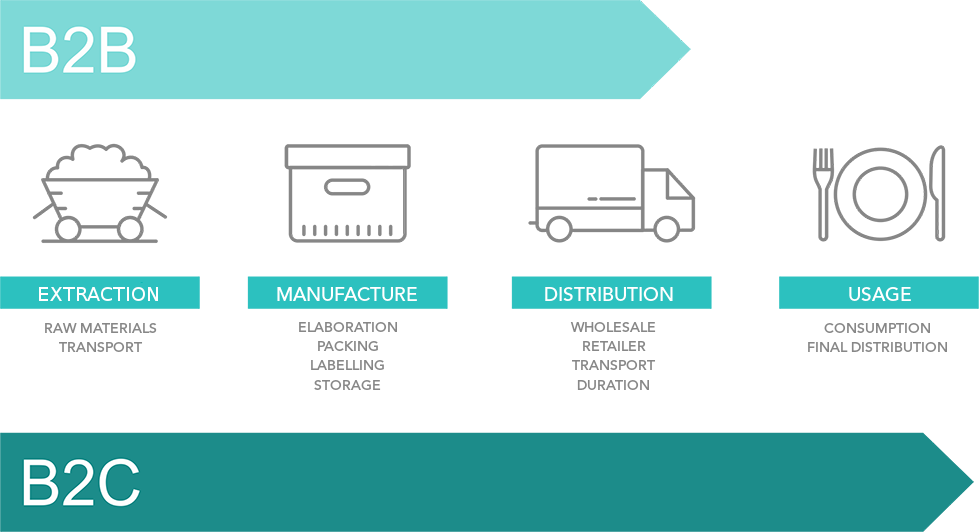LIFE CYCLE ANALYSIS
The second element of interest for the correct calculation of the CF (and of any other type of footprint) is its scope or, corresponding to, what type of processes and materials related to the product is been included in the calculation. In this sense, we speak of the life cycle of a product or service, indicating with this term the phases to which it refers. Usually, several scopes are distinguished: the so-called "cradle to gate" (or business to business, B2B), includes emissions linked to production, transport and storage of the product until its acquisition by the consumer or other company; while the scope “from the cradle to the grave” (or business to consumer B2C) also includes the processes linked to the use phase and their eventual reuse or recycling (which may partially offset previous emissions).

Scope of the different life cycle analysis
The Life Cycle Analysis (LCA) allows evaluating the environmental aspects and potential impacts associated with a certain product or service by:
- El inventario de entradas y salidas de materia/energía más importantes de un sistema.
- La evaluación de los posibles impactos ambientales asociados a las mismas.
- La interpretación de resultados de los puntos anteriores según los objetivos del estudio.
The inputs to the system are raw materials/resource use and fuel/energy consumption. The outputs are emissions to air, water and soil. With regard to CF, the former are of particular interest. Unlike other environmental indicators, CF offers an easily interpretable quantitative measure, which measures the cumulative GHG emission in the life cycle indicated in the scope of the product that we are considering (generally the complete life cycle or a substantial part of it)

















